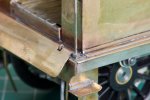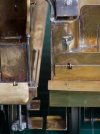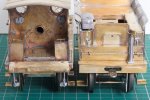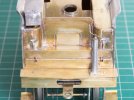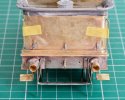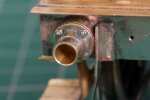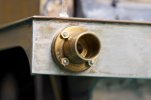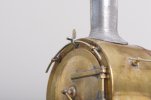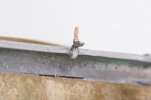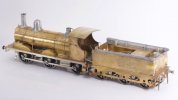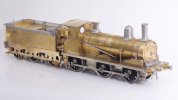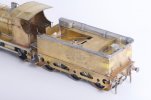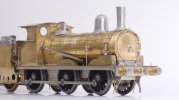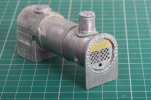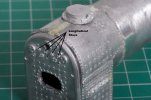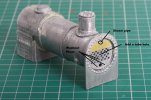Takeaways from the build of the kit.
For my Heybridge Railway, the Y14 currently consumes over a third of my workbench topic while representing just a token visiting engine from the neighbouring GER. A bit out of proportion really. To wrap up the Y14 for now, here are my takeways from building the Connoisseur Models kit which I think are putting together in one place, to help those wanting to build the same kit.
Most of the work to build a Y14 instead of a J15 involved omitting parts supplied in the kit and filling in unwanted holes. The new parts I made or bought were a smokebox door, blower valve, lubricator and cab roof. I also worked up the bifurcated part of the reverser reach rod where it meets the front of the cab. I omitted many parts from the kit, including the loco brakes and the cab roof, so I can only comment on the parts I used . . .
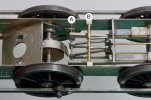
(1) Starting with the chassis, the kit sets the brass rod (A) too far away from the pivot for the reverser (B). I adjusted the holes in the frames to move (A) forwards about 0.7 mm, to get the inside motion to fit. Later I realised the reach rod for the reverser is about 0.5 mm too short at the cab end so it might be better to move the pivot (B) or possibly its fold-up brackets backwards instead.
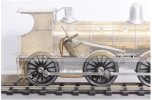
(2) I moved the front of the firebox backwards about 2 mm and built up the underneath of the boiler to fill the gap created. This lets the boiler band here wrap under the boiler and it doesn’t run down the sides of the firebox. The photo composite shows, I got away with it. This image also shows there is room for a small flywheel, but in the end I omitted mine because it doesn't do anything useful with battery power.
(3) With the drive to the middle axle, it is tricky to put any sideplay here unless you arrange a floating gearbox or accept premature wear on the worm gear. Adding a little sideplay will let the loco negotiate a Setrack point. HOWEVER, if I wanted to use a Setrack curve I would need a longer coupling bar between loco and tender. This would rather spoil the look of the model. So, with no sideplay on any axles and the loco and tender a scale distance apart, I have a model which negotiates a 4ft 6in radius curve (at 32 mm gauge), but not a 3ft 5in one. This should be fine for any take on a scenic layout.
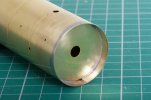
(4) The intended arrangement of the boiler front makes for quite a difficult assembly onto the smokebox. It also gave me a catastrophic disassembly. I filed down the edges of the boiler front and put it about 5 mm inside the front of the boiler. This greatly reduces the amount of metal to be joined or dismantled when adding the smokebox.
And this is all.
But having built a kit supplied in five frets, I think it is incredible to see such complex assemblies go together so well when the parts were drawn by hand. Really, the kit went together like a dream. But then, everyone says Jim’s kits do this.

